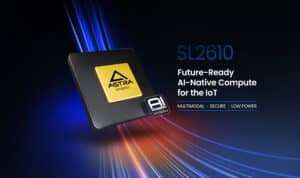Development Tools for Embedded Vision
ENCOMPASSING MOST OF THE STANDARD ARSENAL USED FOR DEVELOPING REAL-TIME EMBEDDED PROCESSOR SYSTEMS
The software tools (compilers, debuggers, operating systems, libraries, etc.) encompass most of the standard arsenal used for developing real-time embedded processor systems, while adding in specialized vision libraries and possibly vendor-specific development tools for software development. On the hardware side, the requirements will depend on the application space, since the designer may need equipment for monitoring and testing real-time video data. Most of these hardware development tools are already used for other types of video system design.
Both general-purpose and vender-specific tools
Many vendors of vision devices use integrated CPUs that are based on the same instruction set (ARM, x86, etc), allowing a common set of development tools for software development. However, even though the base instruction set is the same, each CPU vendor integrates a different set of peripherals that have unique software interface requirements. In addition, most vendors accelerate the CPU with specialized computing devices (GPUs, DSPs, FPGAs, etc.) This extended CPU programming model requires a customized version of standard development tools. Most CPU vendors develop their own optimized software tool chain, while also working with 3rd-party software tool suppliers to make sure that the CPU components are broadly supported.
Heterogeneous software development in an integrated development environment
Since vision applications often require a mix of processing architectures, the development tools become more complicated and must handle multiple instruction sets and additional system debugging challenges. Most vendors provide a suite of tools that integrate development tasks into a single interface for the developer, simplifying software development and testing.

Plainsight Names Jonathan Simkins as President & CFO
Proven enterprise leader brings expertise in managing privately-held companies during hyper-growth in machine learning, infrastructure software and open source. SEATTLE — September 30, 2025 — Plainsight, the leader in operationalizing computer vision through its pioneering modern computer vision infrastructure, today announced Jonathan Simkins as its President and CFO. In this role, Simkins will help scale

Snapdragon Stories: Four Ways AI Has Improved My Life
This blog post was originally published at Qualcomm’s website. It is reprinted here with the permission of Qualcomm. I’ve used AI chat bots here and there, mostly for relatively simple and very specific tasks. But, I was underutilizing — and underestimating — how AI can quietly yet significantly reshape everyday moments. I don’t want to

“Object Detection Models: Balancing Speed, Accuracy and Efficiency,” a Presentation from Union.ai
Sage Elliott, AI Engineer at Union.ai, presents the “Object Detection Models: Balancing Speed, Accuracy and Efficiency,” tutorial at the May 2025 Embedded Vision Summit. Deep learning has transformed many aspects of computer vision, including object detection, enabling accurate and efficient identification of objects in images and videos. However, choosing the… “Object Detection Models: Balancing Speed,

Synaptics Launches the Next Generation of Astra Multimodal GenAI Processors to Power the Future of the Intelligent IoT Edge
San Jose, CA, October 15, 2025 – Synaptics® Incorporated (Nasdaq: SYNA) announces the new Astra™ SL2600 Series of multimodal Edge AI processors designed to deliver exceptional power and performance. The Astra SL2600 series enables a new generation of cost-effective intelligent devices that make the cognitive Internet of Things (IoT) possible. The SL2600 Series will launch

“Depth Estimation from Monocular Images Using Geometric Foundation Models,” a Presentation from Toyota Research Institute
Rareș Ambruș, Senior Manager for Large Behavior Models at Toyota Research Institute, presents the “Depth Estimation from Monocular Images Using Geometric Foundation Models” tutorial at the May 2025 Embedded Vision Summit. In this presentation, Ambruș looks at recent advances in depth estimation from images. He first focuses on the ability… “Depth Estimation from Monocular Images

NVIDIA DGX Spark Arrives for World’s AI Developers
News Summary: NVIDIA founder and CEO Jensen Huang delivers DGX Spark to Elon Musk at SpaceX. This week, NVIDIA and its partners are shipping DGX Spark, the world’s smallest AI supercomputer, delivering NVIDIA’s AI stack in a compact desktop form factor. Acer, ASUS, Dell Technologies, GIGABYTE, HPI, Lenovo and MSI debut DGX Spark systems, expanding

Open-source Physics Engine and OpenUSD Advance Robot Learning
This blog post was originally published at NVIDIA’s website. It is reprinted here with the permission of NVIDIA. The Newton physics engine and enhanced NVIDIA Isaac GR00T models enable developers to accelerate robot learning through unified OpenUSD simulation workflows. Editor’s note: This blog is a part of Into the Omniverse, a series focused on how

“Introduction to DNN Training: Fundamentals, Process and Best Practices,” a Presentation from Think Circuits
Kevin Weekly, CEO of Think Circuits, presents the “Introduction to DNN Training: Fundamentals, Process and Best Practices” tutorial at the May 2025 Embedded Vision Summit. Training a model is a crucial step in machine learning, but it can be overwhelming for beginners. In this talk, Weekly provides a comprehensive introduction… “Introduction to DNN Training: Fundamentals,

